by High Country Gardens
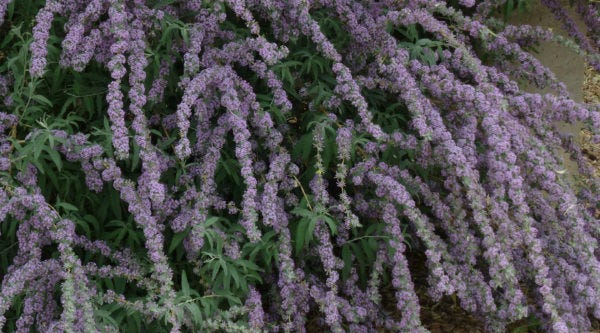
Pruning flowering shrubs is an essential gardening technique to keep flowering shrubs colorful, healthy and well shaped. For some shrubs, pruning needs yearly attention. But for many others, it is only an occasional necessity to be done when they grow too large or become old and need to be re-invigorated to encourage blooming.
One of the most basic principles about pruning is to understand is "when does the shrub bloom?" Knowing this will help determine when during the growing season, pruning should take place.
When To Prune Spring-Blooming Shrubs
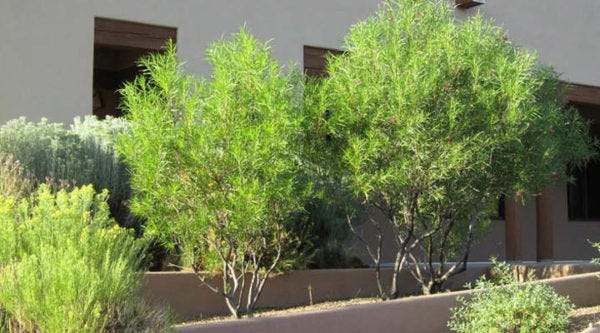
Species that flower in the spring/early summer bloom on last year's growth should be pruned after within a month or so after flowering has finished to allow time for new summer growth to occur and provide flower wood for the following spring.
- Prune to reduce their size or remove unbalanced or irregular growth.
- Never prune spring bloomers in the fall, winter or early spring. Doing so will remove the flowering wood and no flowers will show up that spring.
Examples of spring blooming shrubs: Buddleia alternifolia (Spring Blooming Butterfly Bush), Forestiera (New Mexico Privet), Philadelphus (Mock Orange), Berberis fremontii (Fremont's Barberry), Cytisus kewensis (Kew Broom), Chilopsis (Desert Willow), Saliva dorrii (Great Basin Sage), Rhus (Sumac), Lilacs, Forsythia, Spirea, Viburnam and Potentilla (Potentilla) are some common spring blooming species.
*Note - Native Salvia and Lavender are exceptions to the pruning rules; see instructions below.
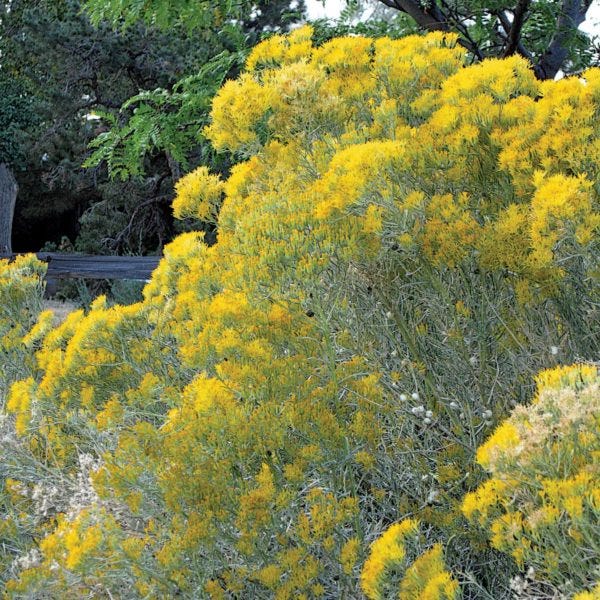
When To Prune Summer-Blooming Shrubs
Species that flower during the summer on the current season's growth should be pruned in mid-spring to remove any winter-killed branches and shape them to be ready to flower later in the growing season.
Examples of summer blooming shrubs: Fallugia (Apache Plume), Chamaebatiaria (Fernbush), Caryopteris (Blue Mist Spirea), Perovskia (Russian Sage), Buddleia davidii (Summer Blooming Butterfly bush), Salvia pachyphylla (Giant Mojave Sage), Chrysothamnus (Rabbit Brush or Chamisa), Vitex (Chaste Tree).
Exceptions to the "When does it bloom" rule include Lavender and Native Salvias.
- English Lavender (Lavandula angustifolia) blooms in late spring/early summer but flowers on new growth. So shear-to-shape and remove any winter-killed twigs and dead interior branches in mid-spring when you see small sprigs of new green growth pushing from the stems. I also recommend cutting off the faded flower spikes when flowering has finished in early summer to redirect the plant's energy into new growth and not the ripening of seed. This will also encourage a flush of September flowers for re-blooming varieties like 'Sharon Roberts', 'Buena Vista' and 'Pastor's Pride'.
- Spanish Lavender (Lavandula stoechas) blooms in early to mid-spring. Shear-to-shape and remove any winter-killed twigs and dead interior branches in late winter.
- French hybrid Lavender (Lavandula intermedia) blooms in summer. But like English lavender, should be pruned in mid-spring when you see small sprigs of new green growth pushing from the stems.
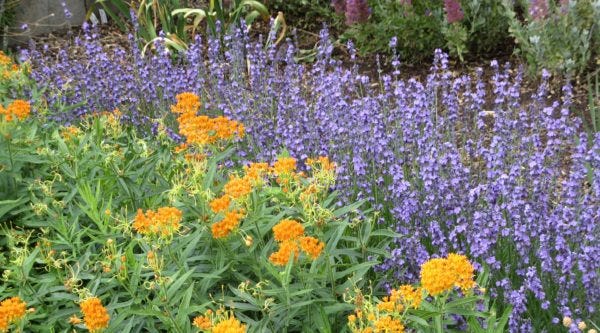
Pruning Native Salvia species and cultivar selections
'Furman's Red' (Salvia greggii and cultivars like 'Ultra Violet', 'Furman's Red', Raspberry Delight®). These small shrubs come into flower in late spring/early summer but should be cut back lightly to evenly shape them each spring. Then prune more severely every third year or so when they start getting stretched and lanky. Cut back to half their height and thin out interior when it is congested and there are a lot of crossed branches.
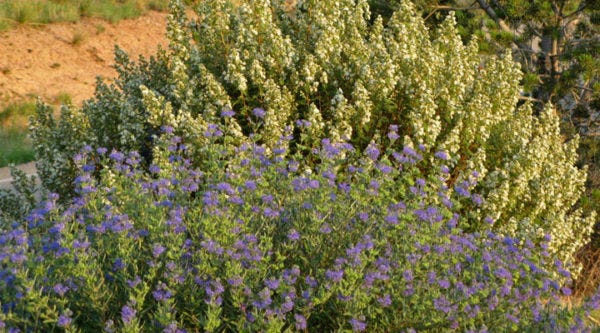
Some Specific Pruning Recommendations
- Blue Mist Spirea benefits from deadheading after flowering is done in late summer. When young and growing vigorously, Blue Mist Spirea should be cut back by removing the top 1/3 of the branches every 3rd of 4th spring.
- Russian Sage looks so much better when cut back hard each spring. I recommend removing all of last year's growth leaving about 6 to 8 inches of stem above ground level.
- Salvia dorrii (Great Basin Sage) and Salvia pachyphylla need only to have their flowering branches pruned out when they are finished blooming. Both these species actually shed the old flowering branches, but gardeners will find the plants to be much more attractive when the old flowering wood is removed in mid-summer of S. dorrii and late summer/early fall for S. pachyphylla.
Just Say "No" to Shearing
But never confuse good pruning with shearing. Shearing is for hedges, Lavender, Blue Mist Spirea, Rabbit Brush, and a few additional species, but not for most shrubs. Many beautiful shrubs are ruined and the grace of their natural shapes are destroyed by ignorant landscapers for whom shearing is the only thing they seem to know how to do. Once a shrub is sheared into a ball or box, it takes a great deal of time, effort and know-how to return it to its natural shape. So be sure to instruct your landscape maintenance company to leave your shrubs alone!
© All articles are copyrighted by High Country Gardens. Republishing an entire High Country Gardens blog post or article is prohibited without written permission. Please feel free to share a short excerpt with a link back to the article on social media websites, such as Facebook and Pinterest.